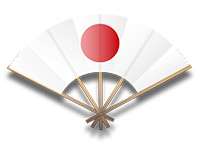Elbow Hyperextension
What is it?
The elbow joint is made up of three bones; the humerus, the radius and the ulna. In it simple form, the elbow joint can be looked on as a simple hinge joint (like a door hinge). There is however actually three joints present in the elbow. The three joint are humero-radial, humero-ulna and proximal radio-ulna. The biggest of these joints is the humero-ulna joint which is the basic hinge joint which allows bending of the arm (flexion and extension). We will talk mainly about this joint in with regards to hyperextension injury. The elbow has some very strong ligaments surrounding it to prevent the joint from being overstretched. These ligaments are ulna collateral, radial collateral and annular ligaments.

When elbow is fully straightened (extended) there is actually an angle formed called carrying angle. The reason for this angle is that the upper limb when walking moves forwards and backwards and this angle prevents the arm from contacting the pelvis. A student in my year at university was asked as to why this angle is greater in women than in men. He answered ‘to allow them to carry the heavy shopping home’, this is obviously not correct and needlessly to say he failed that exam. Women have larger pelvis and smaller shoulders than men so they have a greater carrying angle to prevent contact.
What is the cause of it?
An elbow hyperextension injury occurs when the elbow is forcefully extended beyond it normally physiological range of movement. There is a little bit more movement available but the ligaments function is to prevent the joint moving to the anatomical range of movement. Movement beyond this will result in a fracture.
How does it feel?
Pain will range from a dull ache around the joint to a sharp pain on movement. There may be some slight swelling noticeable around the back of the elbow again depending on severity. If the bicep has gone into a protective spasm it may be difficult to straighten the elbow.
What should you do?
RICE (Rest, Ice, Compression and Elevation) treatment – Rest requires you to stop Kendo/Iaido/Jodo. Ice should be applied at the site of injury for 15–20 minutes every few hours. This will help limit the amount of haemorrhaging and swelling. Compression involves the application of a firm elastic bandage around your elbow. It should be firm but not to cause pain. Elevation involves lying with your elbow resting comfortably on a chair or pillows so that it is above the level of your heart.
You should try and see your osteopath or physiotherapist so they can help make an accurate diagnosis and give you further advice and treatment.
What shouldn’t you do?
You should avoid activities which will increase blood flow and swelling such as warm showers, heat pads, alcohol and excessive flexion and extension of the elbow.
Could there be any long term effects?
Long term effects can be chronic elbow instability which may lead to long term arthritis changes to occur in the elbow.
What can you do to avoid it?
The best way to prevent a hyperextension injury in Kendo/Iaido/Jodo is to assess your cutting/hitting technique. There are no specific stretches one can do except prevent your arm from hyper-extending in the first instance.
Article by: Narendra Arjan BSc (Hons) Ost Med, DO, ND, PGDip Animal Osteopathy
(BKA Kendo Squad Osteopath)
http://www.pegasusclinics.com
